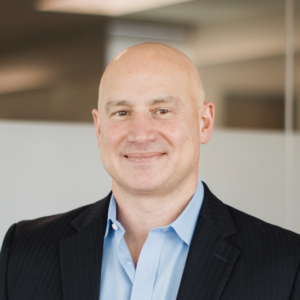The heart-wrenching stories we have witnessed during the COVID-19 pandemic have left us with a feeling of helplessness. Recently, a colleague shared the story of a 71-year-old patient, let’s call her Mary, who after spending a few days in a post-acute facility due to a serious fall, returned home to find her dog and cat — her only companions — had passed away due to natural causes.
The patient navigator was concerned that Mary would neglect her medical needs due to her emotional state. To help Mary continue on a successful path to recovery, the patient navigator encouraged and coordinated her post-discharge medical care — ensuring she received home health services and attended follow-up appointments.

Executive Vice President
Select Medical
In addition to Mary’s emotional setback, she also needed a variety of personal items; however, due to the COVID-19 pandemic, she was afraid to leave her home to obtain these items. With the help of a patient navigator, Mary was able to receive a delivery of personal care goods from Shopping Angels (a free delivery service for high-risk seniors). The patient navigator was even able to help Mary apply for a therapy dog.
Unfortunately, many seniors don’t have access to this type of holistic, integrated care — leaving them even more vulnerable during a pandemic. If COVID-19 has taught healthcare leaders anything, it is this: the very fabric and design of our current system is flawed. Understanding the challenges seniors are facing is vital when it comes to redesigning care in a post-COVID world.
The path to mending health care
The complex issues resulting from COVID-19 has given just cause for reshaping America’s broken health care system. In order to build on the lessons learned from COVID-19, a greater change is needed to help reshape America’s flawed healthcare system.

By way of analogy, we can think about suggested changes to improve the current health care system in terms of how we might improve automobiles. One approach would be to ask the designers and engineers to improve certain features and functions of the car — fuel economy, efficiency of the engine, the vehicle’s aerodynamics and so forth. Another approach could be how we might convert more vehicles to electric motors.
While the two types of cars would still share many features, the second suggested scenario not only impacts the technology in the car itself, but it also alters the entire support structure — gas stations, tanker trucks, oil refineries, drilling and exploration, state and federal fuel taxes and more. We recommend the second scenario in order to move health care forward.
Reducing government barriers to patient-centered, personalized care
In order to spur a drastic change and reshape health care, there are specific areas of change and first steps that must be considered today as well as in the months ahead.
First, we need to address the legacy barriers and obstacles that have been imposed by federal and state governments and transition to high-quality, individualized and holistic patient care. COVID-19 taught us an important lesson on innovation, particularly in relation to telehealth. To quote Seema Verma, the administrator of the Centers for Medicare and Medicaid Services (CMS), “I think it’s fair to say that the advent of telehealth has been just completely accelerated, that it’s taken this crisis to push us to a new frontier, but there’s absolutely no going back.”
Over these last few months, the Department of Health and Human Services (HHS) and CMS have worked diligently to rethink and remove barriers — including the approval of 200 mission-critical waivers that have provided life-saving health care to Americans. A high proportion of these waivers empowered fast adoption of telehealth across the care spectrum. Other waivers allowed healthcare providers to eliminate unnecessary regulations keeping patients in acute care facilities longer than needed.
The removal of these barriers empowers providers, health plans and the industry at large to make more patient-based decisions grounded in best practice judgment. Stripping away arbitrary, government-imposed guidelines leads to fewer roadblocks and improved care for patients. The key lesson moving forward is the importance of empowering clinicians at the point-of-care and those closest and most knowledgeable about a patient, rather than giving power over health care to leaders in our nation’s capital.
Rethinking how and where we care for our growing population of seniors
COVID-19 has put nursing homes and senior-specific care facilities in the spotlight. According to the CMS, 42% of all COVID-19 deaths occurred in nursing homes or assisted-living facilities. The pandemic forced clinicians and caregivers to rethink sending a patient or loved one to a nursing home for fear they may be impacted by COVID-19.
Still, the reality is that nursing homes only account for a small percentage of our growing senior population in America — approximately 4.5%. Today, most seniors continue to reside in our communities. The business case to develop new senior care models is clear as we consider the growing population of people over 65-years-old.
These new models must assess which type of care each senior patient needs and where the care should take place. The following are areas of consideration, as well as related questions, that should be prioritized to ensure patient needs are being best served:
- Predisposition, meaning a patient’s susceptibility to a condition, usually based on genetic and environmental factors — what current comorbidities and social determinants of health put a patient at potential risk?
- Frailty, meaning a decreased ability for a patient to deal with stressors — what state is this patient in today when it comes to physical and mental strength?
- Resilience, meaning the ability for a patient to endure and adapt to health-based hardships — how likely is this patient to rebound from an illness?
Based on the answers to these questions, we must configure a constellation of services around each senior; avoiding the status quo approach to identifying how and where a person should be cared for. Patient needs must come first — then, an identification of where those needs can be best served, whether at home or in a care facility. Honestly, it’s not where the senior is provided care that matters, it’s how well the care aligns with a patient’s needs that determines the outcome.
Continuing to offer convenient, virtual access to care
COVID-19 also taught us that remote care works in many forms, whether a patient is looking to access a rehab specialist for an injury or consult a mental health clinician. What we don’t need at the tail end of the epidemic is yet again to only embrace face-to-face care models.
People have come to expect virtual health care the same way they have come to trust having their groceries delivered; engaging with family, friends and co-workers over FaceTime and Zoom; and ordering necessities with ease and affordability through Amazon. People expect this same experience with health care: simple, user-friendly and fast.
To realize the full value of virtual care, we as an industry must move fast when it comes to embracing remote monitoring technology. Also, government and supporting industries (e.g., technology, mobile, wireless) need to maintain our pace. Without secure remote monitoring solutions, we simply won’t be able to achieve the full benefits of virtual care.
Perhaps even more importantly, we need to ensure that financial incentives align with virtual care models. If reimbursement continues to remain focused on filling beds, then health care organizations are going to do just that because they need to get paid.
Instead, we need to focus on designing the best models of care and base compensation on providers delivering those proven models of care. Change then becomes more realistic, and reshaping health care also becomes less of a long-term dream and more of a near-term collective movement.
What we have learned amid COVID-19 is that it is not just the “engine” that needs a reboot in health care — it’s the whole infrastructure including government regulations, senior-specific care, virtual care access and enablement. Despite these flaws, the people who work in hospitals and post-acute care settings are tirelessly devoted to their patients as evidenced by their unwavering commitment to give selflessly during a time of national crisis. While critical changes like those we have suggested may seem overwhelming, we can and we must embrace reshaping American health care.




